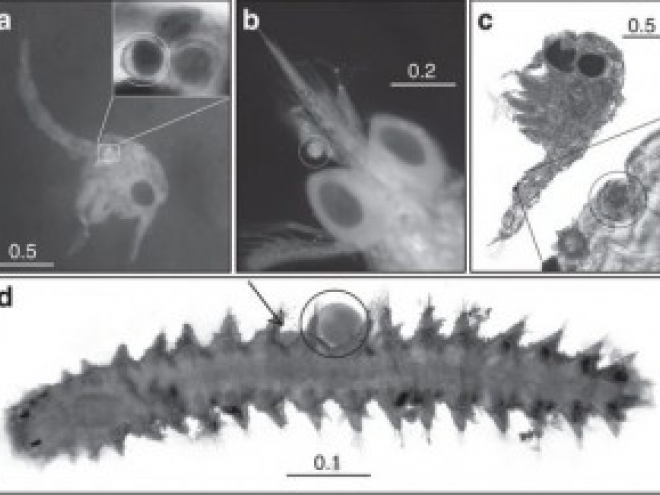In a recent study, marine biologists have published a paradigm shifting experiment that proves the pollination of sea flora occurs via animals; in other words, the sea has bees! Sort of. While they aren’t bees proper, microscopic crustaceans and tiny marine worms help pollinate underwater plant life.
The research team led by Brigitta van Tussenbroek at the National Autonomous University of Mexico recorded video footage of tiny invertebrates moving through a bed of underwater turtle grass. Swarming the grasses like bees swarm flowers, the little creatures were drawn to the male flowers. This feeding frenzy had a side effect, the significant movement of pollen between flowers.
At the time, the finding was surprising as water currents were largely theorized to be the primary movers of pollen in underwater environments. van Tussenbroek and her colleagues decided to recreate the experiment in laboratory conditions. In the study, the researchers added seawater brimming with the cute little invertebrates to aquariums containing flowering turtle grass. A few moments later, the tiny little workers began to work their magic, and pollen grains began to appear on the tentacle-like stigmas of the female flowers. In the control tanks, which lacked the invertebrates, the female flowers weren’t getting a lot of pollination action.
The study suggests that turtle grass seems to be pollinated by water currents in addition to biotic (animal based) pollination. van Tussenbroek and her team are clear in stating that water currents are still essential to the pollination of sea based plant life. However, these little sea bees seem to enhance the process, allowing for a greater rate of pollination, and therefore more plant reproduction.
 Marine crustaceans and worms with pollen grains attached to their bodies and in their digestive tracts. Image: van Tussenbroek et al. 2016
Marine crustaceans and worms with pollen grains attached to their bodies and in their digestive tracts. Image: van Tussenbroek et al. 2016
This is still only one series of tests however, and we are really unclear as to how the rest of the plants in underwater environments pollinate. The study only focused on turtle grass, which is fairly common, but only one species in a massive and diverse ecosystem. This study only begs the question; is this pollination system the exception or the rule? Perhaps most sea plants are mobbed by tiny little invertebrates just looking for a meal causing a tempest of pollination in their wake, or this is just one strange evolutionary offshoot. Scientists have never really looked before, but this study has definitely got their attention. You could say that it’s the bee’s knees.